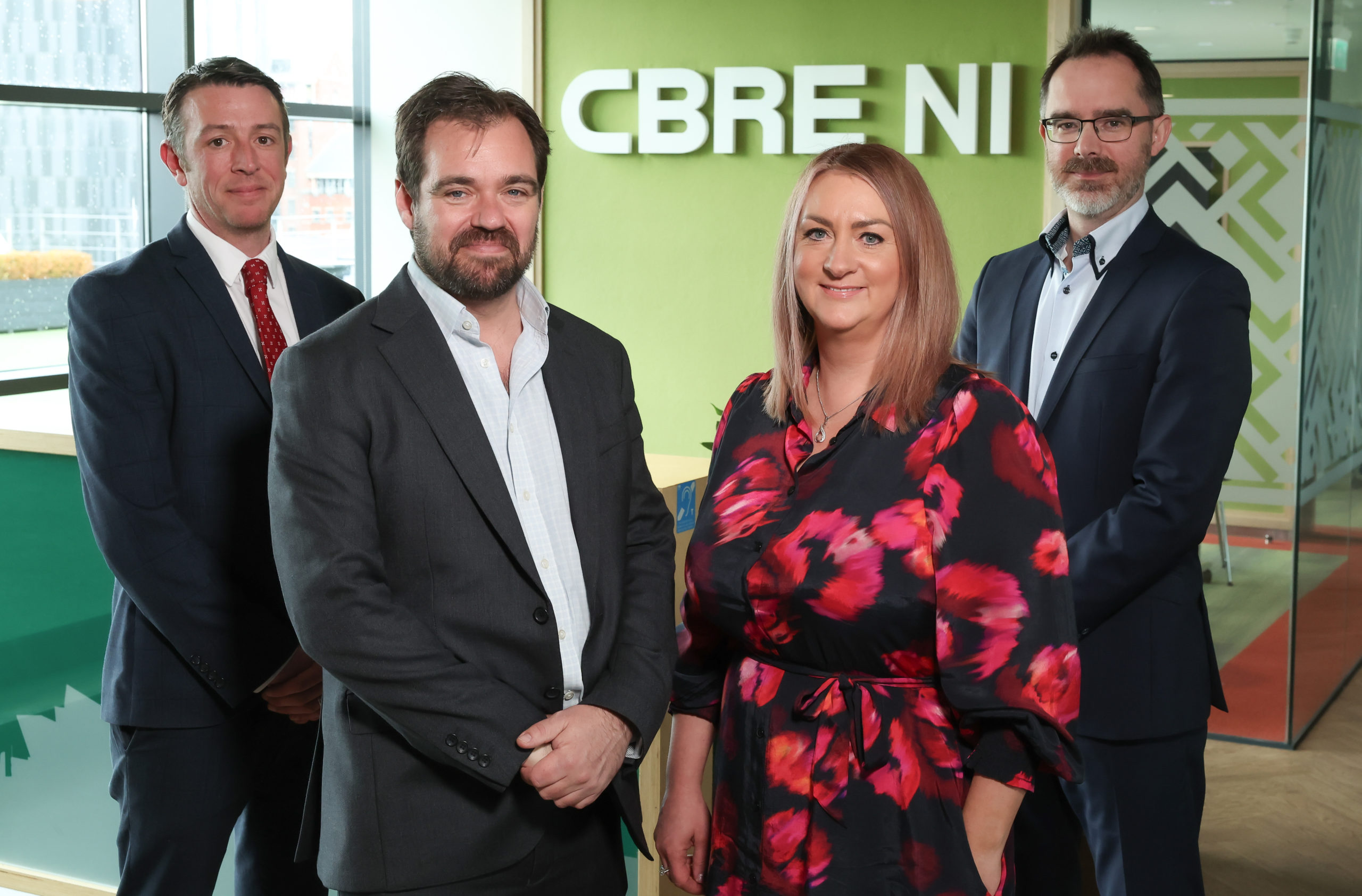In a series of presentations to key industry stakeholders, CBRE NI’s Valuation Team has highlighted the importance of recognising how sustainability has become intrinsically linked to valuation and capital expenditure in the commercial property market.
Deborah Cromie, Director within the Valuation and Professional Services team, welcomed representatives from a wide range of banks to the seminars at CBRE NI’s Belfast offices, along with a number of investors and developers, public sector attendees, and representatives from Queen’s University and Ulster University.
The insights were recently delivered by Sam Carson, Head of Sustainability in CBRE UK’s Valuation Advisory team, who leads on the integration of sustainability benchmarks and metrics into CBRE’s valuation business.
A leading and hugely-respected voice on the subject, Mr Carson was responsible for writing the CREFC report on ESG and valuation for real estate lenders, titled ‘Sustainable Value: ESG Risks in Commercial Real Estate Lending Report’, which was published in November 2023.
Mr Carson emphasised the need for more market alignment in analysing how sustainability is assessed in commercial real estate valuations. He stressed the importance of providing clarity for the financing market when considering how prepared a building is to meet upcoming EPC (Energy Performance Certificate) legislation and how far along the asset is in its journey towards net zero carbon emissions.
Mr Carson commented:
“The importance of sustainability in the commercial property market is a message that has been heard for some time, but it is vital now that every stakeholder realises the intrinsic link between a building’s ESG credentials and the impact these can have on its value.
“Valuation is the intersection at which sustainability meets the market, it can no longer be separated from it. Indeed, sustainability is really the protection of future value, which is why there needs to be close collaboration between the two.
“Leading global corporates now know that having offices that perform strongly against ESG requirements is a major factor in being able to attract the best talent, while many key investors have already declared that they will exit buildings that do not align with sustainable objectives and the drive to net zero.
“Lenders are now also a lot more cognisant of a building’s inherent sustainability risks – climatic, transitional and physical – and the impact these might have on the capital expenditure required to meet responsibilities. Assets that are not aligned with market expectations will depreciate faster.
“It is important that valuers understand how to position sustainability in terms of valuation. They have perhaps instinctively been trying to create an extra category when carrying out valuations, but in fact sustainability is prevalent throughout almost all categories – and valuers must interpret this accordingly.”
Mr Carson also referenced the importance of the CBRE Sustainability Index, which tracks the relationship between sustainability and value for over 1,000 assets on a quarterly basis since the first quarter of 2021.
His presentations to industry stakeholders came just a few months after the CBRE NI Outlook event in January, at which the stark warning was delivered that three-quarters of Belfast’s office stock may become obsolete by 2030 due to upcoming EPC legislation.
Reflecting on the presentations, Deborah Cromie, Director within CBRE NI’s Valuation and Professional Services team, said:
“It is only a matter of time before the regulations, already in place in England and Wales, take effect in Northern Ireland and it will mean that a significant upgrading or repurposing of the Belfast office stock is required.
“CBRE NI is ideally-placed to guide our clients through the processes in an asset management role, and provide valuation advice on the consequent impact upgrades will have on the asset.”



